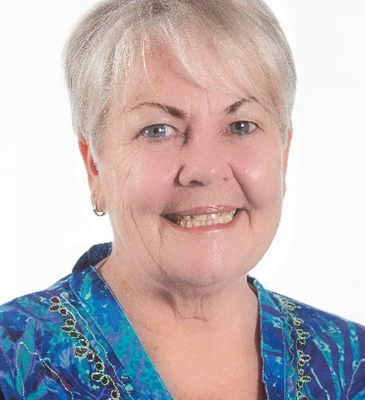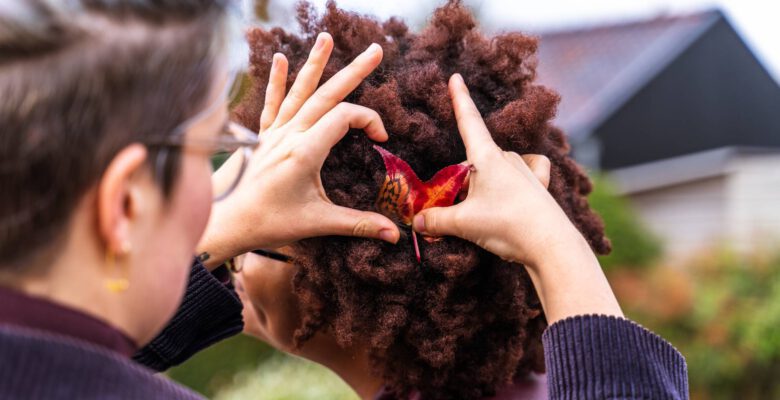Interview with Prof. Dr. Yvonne Sliep, founder of the Inclusion Coaching Method

Her experiences with international conflicts resulted in an effective model for conflict management in local communities and the creation of an inclusive society. The use of critical reflection methodology, storytelling and interventions to gain insight into hidden motivations. contribute effectively to tolerance and acceptance and thus to achieve a more equal society.

How did the idea of the loops come about?
Together with colleagues from the university, Yvonne began to share their concerns at the NGO level about how difficult it seemed to achieve a more equal society.
Even when people embraced this vision and had good interventions and clear intentions to act, they often stuck to words instead of putting words into action. – Yvonne Sliep
While they wondered why this was so, they realized that self-reflection and what people do individually contributed too little to transform a society.
We need a deeper understanding, we need to talk to each other, and uncover the blind spots and assumptions we act on. We could have deeper dialogues if we had a safe place to do this—a space that facilitates this, where we can express our urgent thoughts to each other, and reach deeper critical awareness in conversation. This must be a space where a structure can be found that contributes to safety and trust. It cannot happen in an ordinary meeting; it takes a process and a structure.
This structure is provided by the loops. The loops are interconnected and ensure that we arrive at lasting insights through dialogue. In that phase we no longer consciously think in terms of loops, but holistically. This helps us to act ethically with an authenticity that goes beyond what is good only for ‘me personally’, but ‘for all of us’. ‘I’ becomes ‘we’. – Yvonne Sliep
How does this work in practice?
Every context is different, but essentially it’s the same. We live in a world with power relations; what we do stems from our values and identity, developing a moral compass.
We act individually, collectively and on behalf of others (individual, collective and ‘proxy’ agency ) and have agreed responsibilities and liabilities; we always try to live up to the word. In order to arrive at critical relational reflection, we must remain in deep dialogue. Once we achieve this, we increase our chances of expressing our intentions and moving towards a more equal and inclusive society.
We can transform society through our collective social action. It influences how we look at the world, how we plan our interventions and understand our results. We can view our situation with greater clarity and objectivity. We become more aware of our context.
Because we work with timelines, we can look back and look forward. This provides more insight. Once it has been given a permanent place, our thinking and acting is influenced by it almost automatically. In that phase we no longer consciously think in terms of loops, but holistically.
Critical reflection is the ability to examine yourself while questioning others, To see multidimensionally, to become us. – Yvonne Sliep
Where is this method used?
In the past fifteen years, the method has been offered as a core subject, called ‘ The Personal is The Professional’ , at master’s level at the University of KwaZulu-Natal, where I work. It has a very theoretical basis but is essentially very experimental. In recent years it has served as a framework for the community work that is part of the same master’s degree. This framework, in combination with narrative exercises, has been applied in projects in many other countries, especially on the African continent. For example in: South Africa, Uganda, Kenya, Burundi, Congo, Zimbabwe and Sudan.
It has also been widely used in Australia, by organizations working primarily with migrant populations. Smaller projects have also been carried out in Sri-Lanka, Cambodia and Nepal. In Curaçao we have applied the model both within the government and at the NGO level.
What is the most important lesson you have learned from using this method over the years?
The work is dynamic and repeats itself. By that I mean that we keep re-examining the situation and results that are generated dynamically over time. I love how people get inspired when they discover things about themselves and the other that they didn’t know before. That won’t happen if you just read about it.
The method has many experimental exercises with which you gain self-knowledge and knowledge about the other. The result is never identical in two groups – deep relationships are formed between the people who go through the process together.
We understand that the assumptions we operate from determine how we act, but we need to look at those assumptions one by one (‘unpack’) with others. As trust grows, people are more willing to be vulnerable and investigate, knowing that they are not judged, but respected.
The fact that we can influence the world in which we live and work gives meaning to people’s lives. I too learn from every process I am a part of and this always brings humility.
What risks and pitfalls are involved?
People who participate in the process must be motivated to join the journey that contributes to life and to a more just and equal society. It requires an open mind and a willingness to be vulnerable when exploring yourself. To make this possible, a very safe and confidential environment has to be created. The process must also be expertly supervised.
The facilitator should do personal follow-ups. Ideally, the group should not exceed ten participants and everyone should be present at all sessions. Shortening the process lowers the quality and can even be harmful.
Sometimes it is a challenge for the participants when they realize that having more power and privilege also means that they bear more responsibility and accountability.
Our dominant social discourse favors groups of certain ethnicity, education, class, gender, and so on. For example, a middle-class white man with a good education is imputed power. Society grants him this without him having to do anything for it.
And this is exactly what a dominant social discourse does: dominate. People may not be aware of the power that has been imputed to them because it has always been there. This can therefore be a so-called ‘blind spot’. Working with blind spots can also lead to an “ aha experience ” – a revelation. We need to understand how in these dominant social discourses we should take the time to reflect thoughtfully and reserve space for the process to run its course.
The goal is that all involved come out of the process stronger, with more clarity and a moral compass to navigate difficult situations in our personal and professional lives. The process is not always comfortable, but we breathe through it: only when you reach the limits of your comfort, growth takes place.
How do you view the future of the loops and the underlying story/thoughts?
In my own work I have seen how the framework, which includes all loops, forms the basis for the interventions; the aim is to achieve individual and collective behavioral change. Facilitators and coaches who have become proficient in the method achieve better results in their work, which is very stimulating for practitioners.
I hope that people will feel more comfortable dissecting (‘unpacking’) how power works and see this as a source of possibilities and opportunities for greater equality. We are only as strong as the weakest link, and we can strengthen our human chain.
Our constitutions are formulated to protect human rights. They are set up democratically. They are clear and give us an anchor in society. Unfortunately, turning these into habits remains a challenge. The Critical Reflexivity Framework, with its loops, is a powerful tool for turning vision into action, in a profoundly transformative way. We want to do more than put plasters on what goes wrong, we don’t want to see social abuses continue to grow. We want to create circumstances and actions so that we can really apply what we believe in in our lives.


Leave a Reply